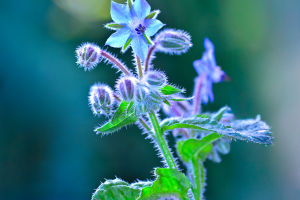You ever catch a scent so strange and earthy it feels like you've walked into another world? That happened to me at a local urban farm last spring.
I leaned over a bushy, silvery-green plant and inhaled—it was unfamiliar, peppery, almost mythical. "That's silphium," the gardener said. "Romans loved it. Nearly worshipped it. Thought it was extinct." I was stunned.
How could a plant be gone for 2,000 years—and now be back?
It turns out there's a quiet movement underway: reviving the botanical backbones of ancient civilizations. From the incense-filled temples of Egypt to the apothecaries of Rome and spice trails of the Maya, forgotten herbs and spices are being unearthed, replanted, and rediscovered—not just for their flavor, but for their stories, rituals, and healing properties.
Let's dig into three fascinating plants from ancient Egypt, Rome, and the Maya world—and how you can grow (or taste) them today.
1. Fenugreek: Egypt's Golden Seed
Open a jar of fenugreek seeds and you'll smell something oddly familiar—sweet, nutty, almost like maple syrup. But this little golden seed held far more meaning in ancient Egypt than most people realize. It wasn't just for cooking—it was ritual, remedy, and daily life all rolled into one.
Fenugreek was used in mummification rituals, perfumes, and even offerings to the gods. But it also had very practical uses. Egyptian physicians prescribed it for everything from respiratory issues to childbirth recovery. Seeds were soaked and chewed, boiled into tonics, or ground into paste for wound care.
What's wild is how modern science is now catching up. According to a 2022 review in Phytotherapy Research, fenugreek has shown promise in supporting blood sugar balance, reducing inflammation, and easing menstrual discomfort. Turns out, the ancients were onto something.
And yes—you can absolutely grow it at home:
1. Soak the seeds overnight before planting.
2. Choose a wide, shallow container or garden bed with well-draining soil.
3. Sow directly and keep the topsoil moist; sprouts appear within 3–5 days.
4. Harvest the tender leaves early (within 20–30 days) as microgreens or wait 6–8 weeks for seeds.
Both the leaves and seeds are edible. The leaves have a slightly bitter, spinach-like taste that works beautifully in flatbreads, while the seeds can be lightly toasted to bring out their maple-curry flavor.
Adding a spoonful of this ancient spice to your meals isn't just a flavor boost—it's a connection to a culture that valued the seed for both its mystery and medicine.
2. Silphium: Rome's Lost Treasure
Silphium is one of history's most mysterious plants. It was so valuable to ancient Rome and earlier to the Greeks that it appeared on coins. The Romans used it as a spice, perfume base, and even a medicine. But around the 1st century AD, it vanished—believed to be overharvested into extinction.
So when a few botanists in a Mediterranean region recently found a plant with near-identical properties, the world took notice. Though not genetically confirmed as silphium, it shares many of the same features and strong aromatic scent.
What made silphium so beloved?
1. It had a pungent, garlicky flavor that spiced food without overpowering it.
2. It was used to treat coughs, indigestion, and even as a contraceptive, according to some historians.
3. Its heart-shaped seeds became symbolic in Roman art—possibly the origin of the modern love heart.
Modern gardens can't grow true silphium (yet), but its closest living relative, Ferula tingitana, can be grown in Mediterranean climates or with greenhouse help. It prefers sandy soil, full sun, and minimal water.
While it's not ready for culinary use just yet, researchers are working on safe extracts and culinary applications, hoping to reintroduce it to our spice racks soon.
3. Hoja Santa: The Mayan Memory Leaf
In the humid, green hills of the ancient Maya world, hoja santa was more than a kitchen staple—it was medicine, wrap, and ritual.
This heart-shaped leaf, known for its subtle anise and sassafras flavor, was used by the Maya to wrap tamales, flavor stews, and even aid digestion. It still appears in traditional dishes today—but outside of its native region, it's just starting to gain popularity.
Growing Piper auritum, the plant's botanical name, is surprisingly simple:
1. It thrives in semi-shade, moist soil, and warm climates.
2. It can grow up to 6–8 feet tall if left unpruned.
3. The leaves can be harvested as needed, typically 3–6 months after planting.
People today are rediscovering it not only for its culinary use but also for its ability to support gut health and soothe stomach discomfort—benefits long known by indigenous communities.
The best part? Fresh hoja santa leaves can replace aluminum foil or plastic wrap for steaming. It's biodegradable, aromatic, and steeped in ancient tradition.
Why These Plants Matter Today
There's something grounding about growing a plant that once flavored Cleopatra's drink or lined a Roman market stall. These aren't just botanical curiosities—they're living memories. They carry centuries of culture, medicine, and flavor within their roots.
In a time where everything feels new and fast, these ancient herbs offer a counterbalance: slowness, mystery, depth. They invite us to ask, What have we lost along the way? And maybe more importantly: What can we bring back?
Next time you're adding basil or rosemary to a dish, take a moment. These ancient herbs aren't just history. They're a reminder that flavor, healing, and story are deeply intertwined. And sometimes, all it takes to rediscover them is a pot of soil and a little curiosity.


